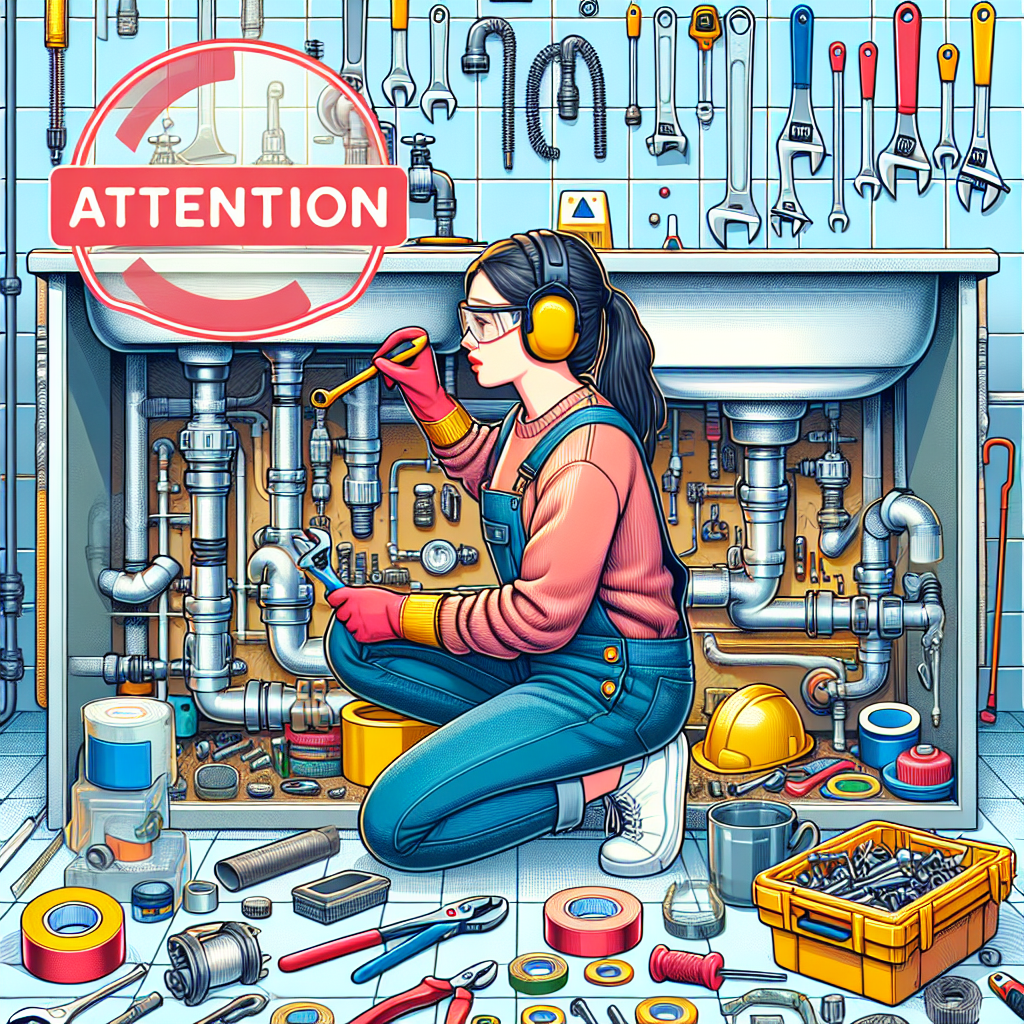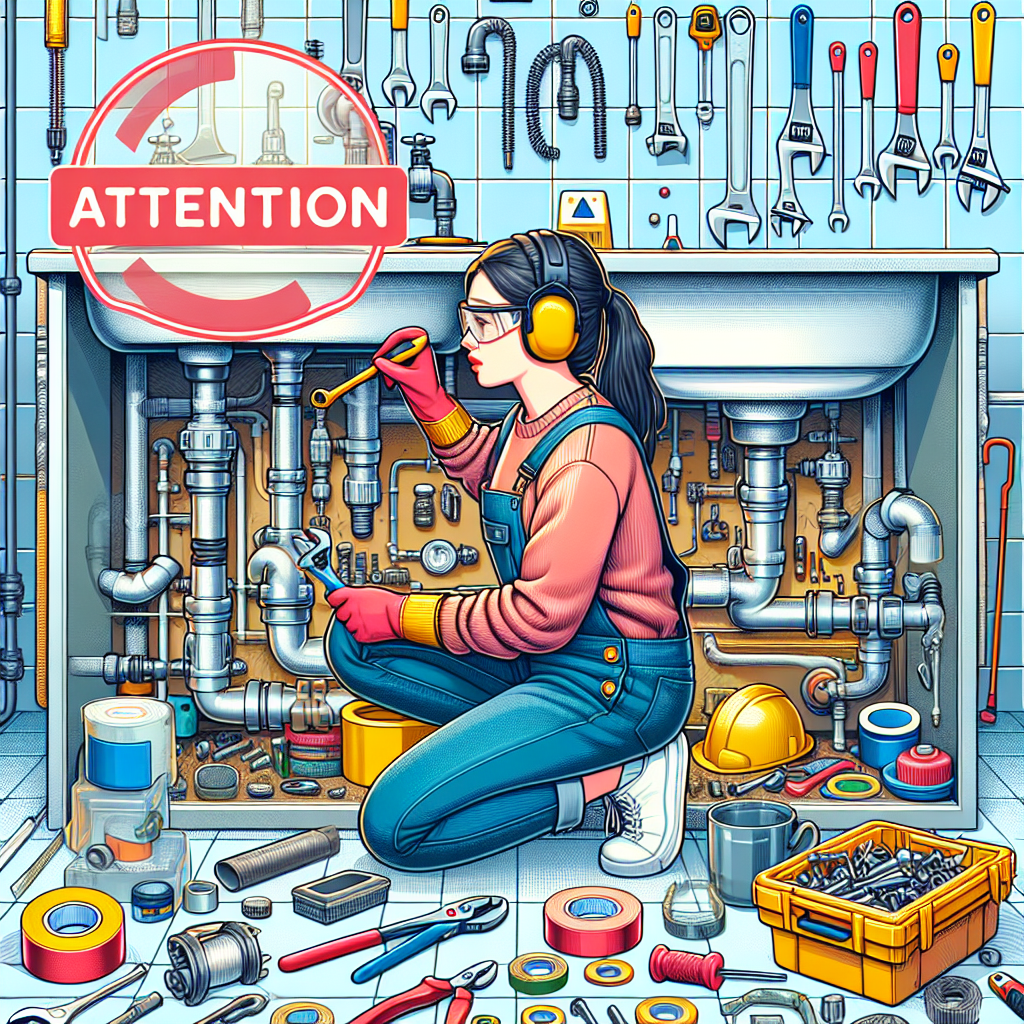If you’re a DIY enthusiast or simply looking to save some money on home repairs, it’s important to be aware of common plumbing mistakes that can turn into costly disasters. From improperly installing fixtures to ignoring minor leaks, these errors can lead to water damage, wasted resources, and even potential health hazards. In this article, we’ll explore some of the most common DIY plumbing mistakes to avoid and provide you with practical tips to ensure your plumbing projects go smoothly. So grab your tools, put on your plumber’s hat, and let’s get started!

Using the Wrong Tools
Not having the right tools
One of the most common mistakes people make when tackling DIY plumbing projects is not having the right tools. Plumbing requires specific tools for various tasks such as pipe cutting, tightening fittings, and soldering. Without the proper tools, you may find yourself struggling to complete the job efficiently and effectively.
Investing in a basic plumbing toolkit is essential. This toolkit should include essential items such as a pipe wrench, adjustable wrench, pliers, hacksaw, tape measure, pipe cutter, and a torch for soldering. Having these tools readily available will save you time and frustration in the long run.
Using the wrong tools for the job
Another mistake people make is using the wrong tools for a plumbing project. While it may seem tempting to use a makeshift tool or try to make do with what you have available, using the wrong tools can lead to further damage and complications.
For example, using a regular wrench instead of a pipe wrench can strip or damage the pipe fittings, making it difficult to properly tighten or loosen them. It is essential to use the correct tools designed specifically for plumbing tasks to ensure the job is done correctly and avoid unnecessary damage.
Improper tool maintenance
Proper tool maintenance is often overlooked but plays a significant role in ensuring successful DIY plumbing projects. If your tools are not well-maintained, they may not function correctly and can lead to errors or accidents during the project.
Regularly cleaning and inspecting your tools for any signs of damage is crucial. This includes removing any debris or buildup, oiling moving parts, and storing them in a dry, secure location. By taking care of your plumbing tools, you can extend their lifespan and ensure they are always ready for use.
Ignoring Safety Precautions
Not wearing safety gear
Your safety should always be a top priority when working on DIY plumbing projects. Unfortunately, many people neglect to wear proper safety gear, putting themselves at risk of injury.
When working with plumbing, it is essential to wear safety goggles to protect your eyes from any debris or chemical splashes. Additionally, wearing work gloves can prevent cuts or burns, especially when handling sharp or hot objects. Lastly, wearing appropriate clothing and footwear is important to reduce the risk of slips, falls, or exposure to chemicals.
Working on live plumbing
Another common mistake is working on live plumbing. This means attempting to repair or replace pipes or fittings without shutting off the water supply. By doing so, you risk not only damaging the plumbing system but also flooding your home or causing water damage.
Always remember to shut off the water supply before starting any plumbing work. This can usually be done by turning off the main water valve. If you are unsure how to do this, it is best to consult a professional plumber to avoid any potential disasters.
Neglecting to shut off the water supply
Even if you do remember to shut off the water supply before starting your DIY plumbing project, another mistake people make is forgetting to turn off certain water sources. For example, forgetting to turn off the water heater or individual faucet valves can lead to unexpected water flow and potential accidents.
Before starting any plumbing work, it is crucial to identify and turn off all water sources relevant to the project. This will ensure that there are no surprises and that you can work on the plumbing system safely and efficiently.
Not Having a Plumbing Plan
Not understanding the plumbing system
A lack of understanding of the plumbing system is a significant mistake many DIY enthusiasts make. Without a proper understanding of how the plumbing in your home works, it is challenging to plan and execute projects effectively.
Take the time to educate yourself about your home’s plumbing system. Learn where the main water valve is located, how the pipes are interconnected, and the purpose of various fixtures and fittings. This knowledge will help you plan your projects more accurately and avoid potential complications.
Failing to create a plan for the project
Jumping into a plumbing project without a clear plan is a recipe for disaster. Failing to create a plan can lead to wasted time, extra expenses, and even the need for professional assistance to fix mistakes.
Before starting any plumbing project, take the time to create a comprehensive plan. This should include identifying the issues or goals of the project, determining the required materials and tools, and outlining the steps needed to achieve the desired outcome. Having a solid plan in place will guide your work and increase the chances of success.
Not considering future needs
When working on a plumbing project, it is crucial to consider future needs. Ignoring future needs can result in additional work, expenses, and potential damage to your plumbing system.
For example, if you are adding a new bathroom, consider the water supply and drainage requirements for future fixtures. Installing larger pipes now can save you from having to do costly renovations later. Additionally, think about accessibility for maintenance and future repairs. Planning for the future will help you make informed decisions and avoid unnecessary headaches down the line.

